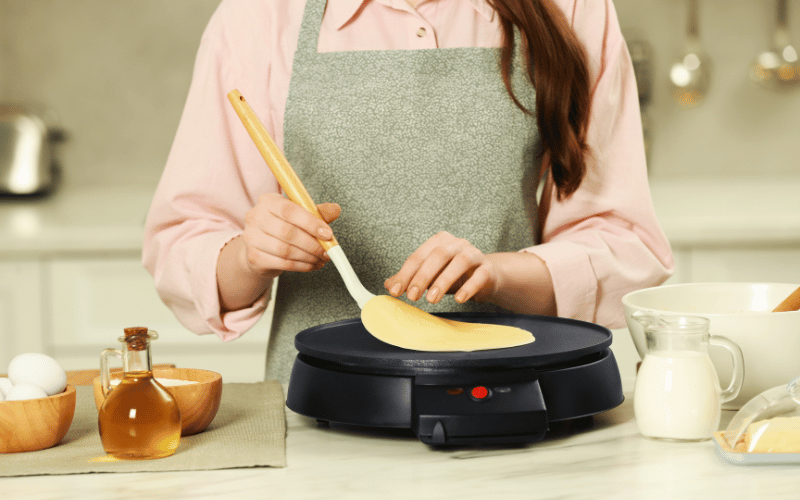Welcome to the delightful world of baking, where the alchemy of ingredients transforms mere mixtures into mouthwatering masterpieces. As an aspiring baker or seasoned kitchen maestro knows, leavening agents are the unsung heroes behind the rise and fluffiness of our favorite treats. Yet, in this enchanted realm, two common pantry staples often spark bewilderment and culinary head-scratching: baking soda and baking powder. It’s common to find these two seemingly similar white powders causing confusion and chaos in the kitchen. Fear not, intrepid bakers, for today, we embark on a flavorful journey to unravel the mysteries of baking soda and baking powder.
Table of Contents
This blog post serves as our trusty guide, illuminating the path to pastry perfection and clarifying the crucial differences between these baking basics. Let the adventure begin!
What is Baking Soda?
Baking soda, a kitchen wizard in its own right, is a versatile leavening agent that plays a pivotal role in the world of baking. Composed of sodium bicarbonate, this powdery miracle worker is not just for absorbing fridge odors – it’s a rising star in the culinary cosmos. At its core, baking soda is a simple compound with extraordinary capabilities.
When combined with an acidic ingredient, such as vinegar or yogurt, the magic happens. Baking soda reacts by producing carbon dioxide gas, creating bubbles that lift and lighten batters and doughs. This effervescent reaction is the secret behind the airy textures of pancakes, muffins, and quick breads. Picture those fluffy pancakes on a lazy Sunday morning – that’s the handiwork of baking soda at play.
So, the next time you reach for this unassuming white powder, know you’re summoning the enchantment that elevates your baked delights to new heights.
Unraveling Baking Powder
Baking powder, the unsung hero of leavening, is a dynamic force in the realm of baking, boasting a composition that brings life to our favorite treats. Comprising three key components – acidic cream of tartar, alkaline baking soda, and a starch filler – baking powder is a meticulously balanced concoction.
What sets it apart is its dual-acting nature, a feature that distinguishes it from its single-acting counterpart, baking soda. Single-acting powder activates only once when mixed with liquid, while the double-acting variety showcases its prowess in two stages: first upon contact with liquid and then when exposed to heat during baking. This dual activation ensures a consistent rise and texture in baked goods, making it a reliable companion in the kitchen. Unlike baking soda, baking powder doesn’t rely on external acidic ingredients, making it a convenient option for recipes that don’t naturally contain acids.
The next time your recipe calls for baking powder, appreciate the intricate dance of components that brings your culinary creations to life.
The Role of Acidity
Acidity is the maestro orchestrating the symphony of leavening in baking. In the chemistry of baking soda, this acidic partner is essential for activation, as baking soda relies on an acidic ingredient – be it yogurt, buttermilk, or vinegar – to unleash its bubbling prowess. Without this acidic dance partner, the leavening magic remains dormant. On the flip side, baking powder is a self-contained duet, harmonizing both acid (cream of tartar) and base (baking soda) within its composition.
This dual nature ensures a reliable rise, eliminating the need for external acidic companions. Understanding this delicate acidity ballet is the key to mastering the art of leavening in your baking escapades.
Choosing the Right Leavening Agent
Choosing the right leavening agent is the compass for a triumphant baking journey. Factors like recipe acidity, desired texture, and ingredients play a pivotal role in the decision between baking soda and baking powder. Beware of common pitfalls – substituting one for the other can lead to culinary calamities, from flat disappointments to overzealous eruptions. Fear not, intrepid baker, for success lies in understanding the nuances. When in doubt, consult the recipe for guidance.
Embrace the alchemical dance of baking soda with acidic marvels, and relish the convenience of double-acting baking powder. With these insights, your baking creations are destined for golden, risen perfection.
Baking Soda and Baking Powder in Action
Let’s witness the culinary showdown of baking soda and baking powder in action, side by side. In a simple recipe, we’ll explore their distinct roles, employing visual aids and diagrams to demystify the leavening process. Picture the dance of bubbles and the rise of dough as these leavening agents work their magic. The results? A tale of contrasting textures and flavors – baking soda lends a crisp edge while baking powder yields a softer, fluffier outcome. Prepare to savor the nuances as we unravel the delicious drama in the grand finale of our baking soda versus baking powder saga.
In the grand finale, let’s recap the vital disparities between baking soda and baking powder – culinary allies with distinct roles. As you embark on your baking adventures, embrace experimentation with both, gaining confidence in their unique powers. Understanding these baking basics is the key to unlocking a world of culinary possibilities. So, fellow bakers, may your kitchens be filled with the sweet aroma of success, and may you continue to master the enchanting artistry of leavening with finesse and flavor. Happy baking!

Hey There, I’m Monica, Mom of two. This is my personal blog site. Here I write about Kitchen Tips Tricks, Recipes, and Review the products I use.
I hope you enjoy the article. Give me feedback on how I’m doing with my blog. I would appreciate it so much.
Have a great day! 🙂
[Follow me on Twitter]


